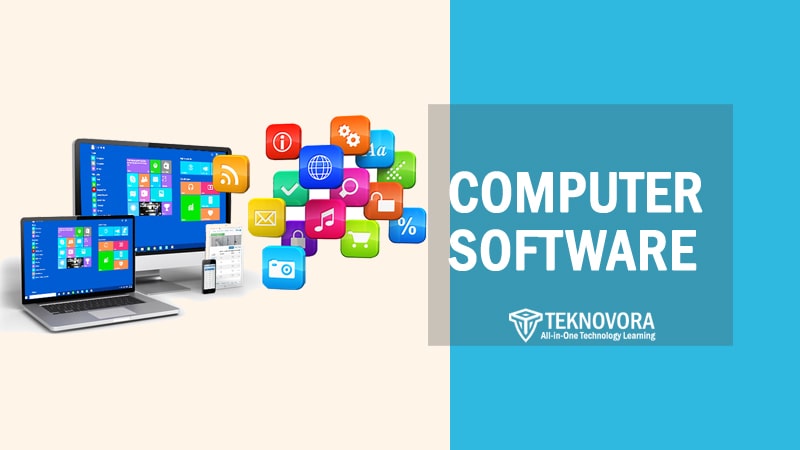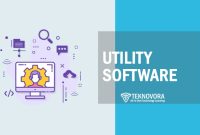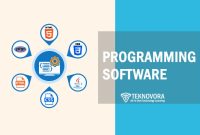Whenever you power on a computer, whether it’s a sleek laptop or a powerful workstation, you’re interacting with something most people take for granted—software. It’s the invisible forcetyp that makes every click, every search, every file saved possible. Without Computer software, even the most advanced computer hardware is nothing more than a lifeless collection of circuits and metal.
Think about how many tasks you complete daily using software—sending emails, editing documents, streaming videos, analyzing data, designing graphics, or just browsing the web. Behind every one of those actions lies a sophisticated layer of instructions and code guiding the hardware to act exactly as needed. From the operating system that boots your device to the apps that fuel your creativity and productivity, software powers the digital world.
But despite being so integral to our lives, “software” is a term often misunderstood or oversimplified. Is it just the apps we download? Does it only refer to what’s on a computer? What about smartphones? And how is software even made?
This article aims to clear the fog. We’ll break down what computer software truly is, explore its many types, dive into its essential functions, and provide real-world examples you’ll recognize instantly. Whether you’re a tech enthusiast, a student, or simply curious about how your digital world operates, this guide will give you a solid foundation to understand one of the most fundamental components of modern technology.
By the end, you won’t just know what software is—you’ll appreciate how it works, why it matters, and where it’s taking us next.
What Is Computer Software?
To understand the essence of computer software, let’s strip it down to its core definition: Software is a set of instructions, data, or programs used to operate computers and execute specific tasks. Unlike hardware—which is the tangible, physical component of a computer—software is intangible. You can’t touch it, but it controls nearly everything the hardware does.
Imagine a computer as a musical instrument. The hardware is the violin, while the software is the musician and the sheet music combined. Without the software, the hardware simply cannot perform.
The concept of software dates back to the early 19th century, long before the invention of the modern computer. In fact, Ada Lovelace, often regarded as the world’s first computer programmer, wrote an algorithm for Charles Babbage’s Analytical Engine in the 1840s—making her the pioneer of software before computers even existed in physical form.
Fast forward to the mid-20th century, when software began evolving alongside computers. Early software was built for very specific machines using assembly language and was hardcoded into memory. Over time, higher-level programming languages like FORTRAN and COBOL made it possible to create more complex and reusable software. By the 1980s and 1990s, operating systems like MS-DOS and Windows brought software into the hands of everyday users.
Today, software is everywhere—from the apps on your phone to embedded systems in vehicles, appliances, and industrial machines.
Key Characteristics of Software
Unlike physical hardware components, computer software has several unique characteristics:
| Characteristic | Description |
|---|---|
| Intangible | Cannot be physically touched or seen—exists as code or digital files |
| Programmable | Created and altered using programming languages |
| Non-degradable | Doesn’t wear out like hardware but can become obsolete or buggy |
| Evolves Quickly | Constantly updated with patches, upgrades, and new features |
| Hardware-Dependent | Needs compatible hardware to run effectively |
These properties make software flexible, scalable, and rapidly adaptable—traits that have propelled digital transformation across industries.
How Software Works with Hardware
When you press a key on your keyboard, click a button, or launch an app, your input triggers a chain of events behind the scenes. Here’s a simplified flow:
- Input Device (e.g., mouse, keyboard) sends a signal to the computer
- Operating System (a type of system software) interprets that input
- The application software (e.g., a web browser or word processor) processes the command
- The CPU executes the relevant instructions stored in the software’s code
- The result is sent to an output device (e.g., monitor, speaker)
This symphony of interaction happens in milliseconds—all thanks to software acting as the brain behind the scenes.
Examples of Everyday Software
To make the idea more concrete, here are examples of common computer software types and their real-world applications:
| Software Name | Category | Purpose |
|---|---|---|
| Microsoft Windows | System Software | Operating system for desktops |
| Google Chrome | Application Software | Web browsing |
| Adobe Photoshop | Application Software | Graphic design and editing |
| Visual Studio Code | Programming Software | Code writing and debugging |
| CCleaner | Utility Software | System cleaning and optimization |
Each of these pieces of software serves a distinct function but operates on the same basic principle: translating user input into useful digital actions via hardware.
Main Classifications of Computer Software
While “software” is often spoken of as one broad category, it’s actually divided into several types based on its purpose and functionality. Understanding these classifications helps clarify how different kinds of programs work together to power your computer—and your daily digital life.
Let’s explore the four major types of computer software:
System Software
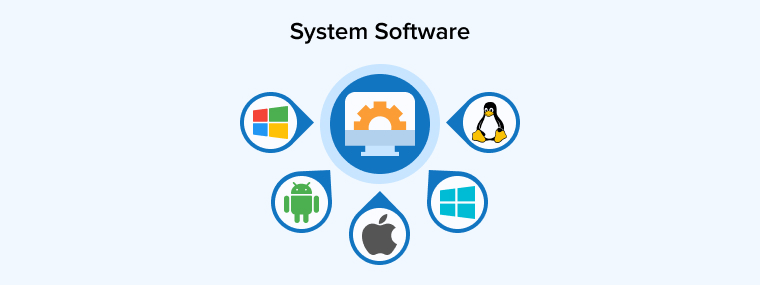
System software is the foundation layer that allows the hardware and other computer software to communicate. Without system software, your computer wouldn’t be able to boot up, recognize hardware components, or run applications.
Key Roles:
- Manages hardware components (CPU, memory, storage)
- Provides a user interface (GUI or command line)
- Acts as a platform for running other software
Main Components:
- Operating System (OS)
- Examples: Windows, Linux, macOS, Unix
- Manages tasks like memory allocation, input/output processing, and file handling.
- Device Drivers
- Facilitate communication between OS and hardware (printers, graphics cards, USB drives).
- Firmware
- Software embedded into hardware (e.g., BIOS or UEFI). It runs before the OS loads.
Why It Matters:
System software ensures your computer understands how to use its physical parts and keeps everything running smoothly behind the scenes.
Application Software
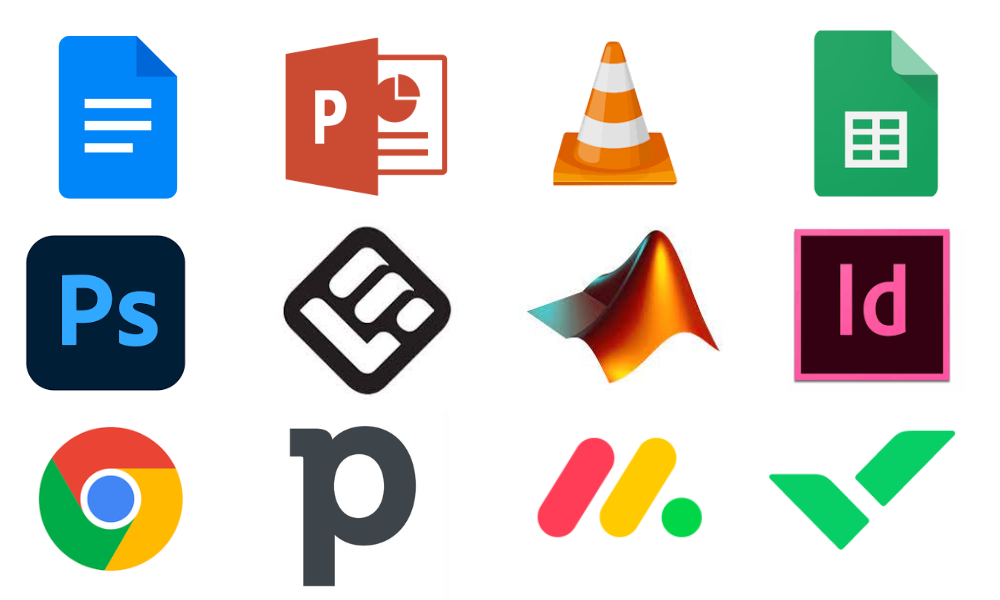
Application software is designed for end-users to perform specific tasks or solve problems. Whether you’re editing a photo, writing an email, or watching a video, you’re using application software.
Common Categories:
- Productivity: Word processors, spreadsheets (MS Word, Excel)
- Communication: Email clients, messaging apps (Outlook, Slack)
- Multimedia: Video players, graphic editors (VLC, Adobe Premiere)
- Web-based: Browsers and cloud apps (Chrome, Google Docs)
Installed vs Web-based:
- Installed applications: Run locally on your system.
- Web applications: Run through browsers, require internet access.
Why It Matters:
These tools make your device useful. Without application software, even the most powerful system software is limited.
Programming Software
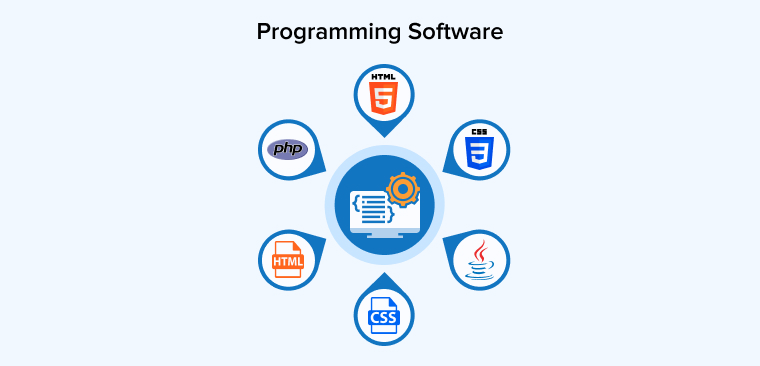
Programming Software includes the tools used by developers to write, test, and debug other computer software. It forms the backbone of software creation.
Core Components:
- Text Editors & IDEs (Integrated Development Environments)
- Examples: Visual Studio Code, Eclipse, IntelliJ
- Provide syntax highlighting, debugging tools, and code suggestions.
- Compilers & Interpreters
- Convert human-written code (e.g., Python, Java) into machine language.
- Debuggers
- Help developers find and fix errors in the code.
Why It Matters:
Without programming software, no other software—system or application—would exist.
Utility Software
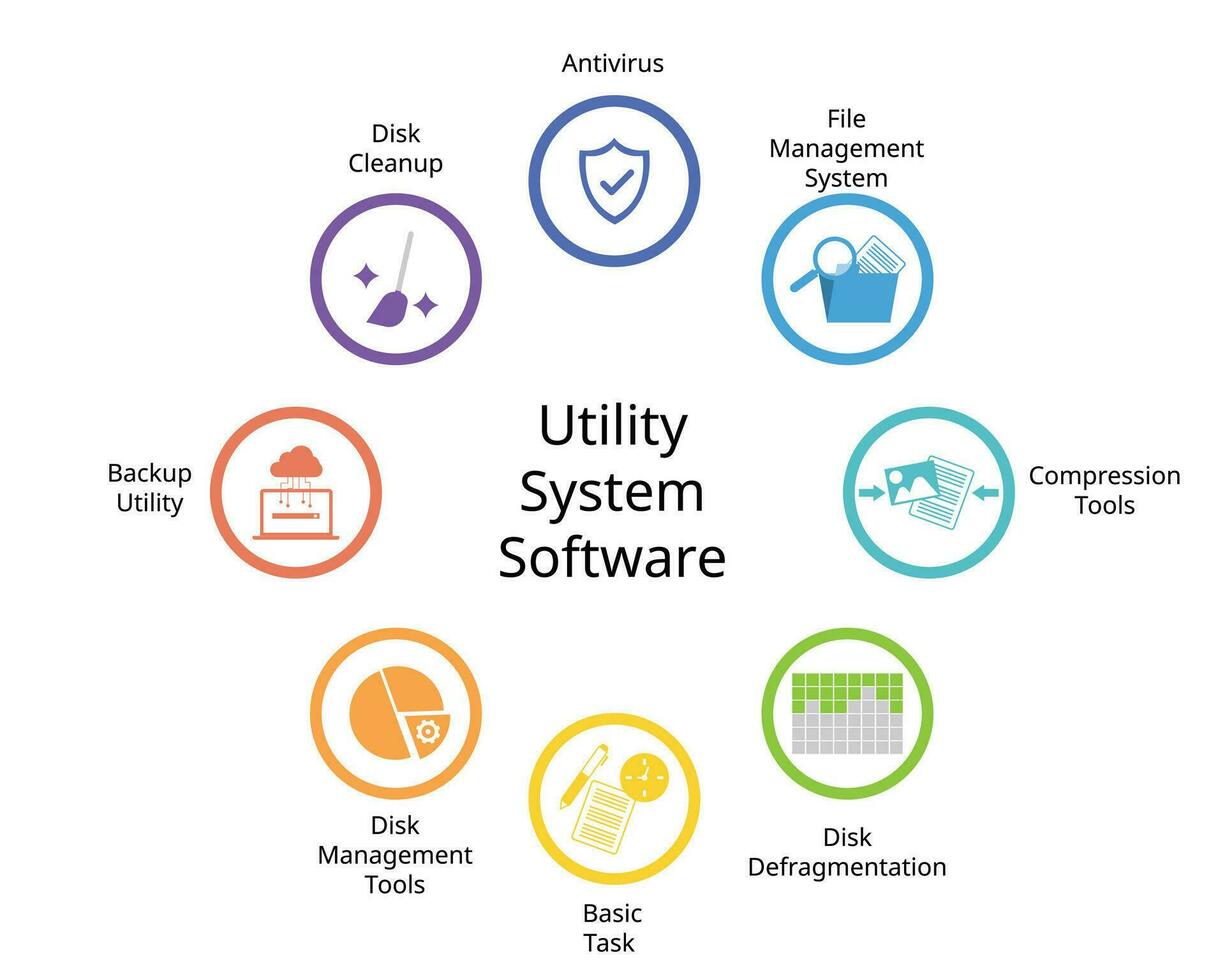
Utility Software programs are small, specialized tools that maintain, optimize, or protect the computer system. They usually run in the background or as standalone tools to enhance performance.
Common Examples:
- Antivirus software: Scans for and removes malware (e.g., Avast, Bitdefender)
- Disk cleanup tools: Removes temporary files (e.g., Windows Disk Cleanup)
- Backup software: Creates data backups (e.g., Acronis, Macrium Reflect)
- File compressors: Reduce file sizes (e.g., WinRAR, 7-Zip)
Why It Matters:
These tools help your system stay healthy, fast, and secure—even as you install and use other computer software types.
Summary Table: Types of Computer Software
| Software Type | Main Purpose | Examples |
|---|---|---|
| System Software | Manages hardware and OS operations | Windows, Linux, BIOS, device drivers |
| Application Software | Helps users perform specific tasks | MS Word, Chrome, Photoshop |
| Programming Software | Tools for software development | VS Code, Python, Java Compiler |
| Utility Software | System optimization and maintenance | CCleaner, Avast, WinRAR |
Functions and Importance of Computer Software
Computer software isn’t just something your device runs—it’s what makes the device functional in the first place. Without software, even the most powerful hardware setup would be completely useless. Every action, from launching a browser to rendering 3D animations, is made possible through software’s underlying logic and control mechanisms.
Let’s break down the core functions of computer software and explore why it’s so essential in modern digital systems.
1. Enabling User Interaction with Hardware
One of the most basic yet critical roles of computer software is to serve as a bridge between the user and the hardware. For example:
- The operating system allows you to interact with your files using a graphical interface.
- Drivers translate user inputs (like mouse clicks or keystrokes) into machine-readable actions.
Without software, your mouse, keyboard, or monitor wouldn’t “know” what to do.
2. Resource Management
Software handles how your device allocates limited resources like:
- Memory (RAM): Determines which processes get access and how much
- Processor (CPU): Manages which task runs when (scheduling)
- Storage: Reads/writes data efficiently
- Network bandwidth: Prioritizes applications (e.g., video streaming over updates)
This functionality is typically managed by system software, especially the OS.
3. Running and Supporting Applications
From games and productivity tools to educational platforms and creative suites, application software relies on system software to function. Computer software enables:
- Text processing
- Video editing
- Database management
- File conversions
- Audio playback and much more
It’s also the computer software that keeps these applications up to date via patches and updates.
4. Enhancing Productivity and Automation
Software allows individuals and businesses to do more in less time. For instance:
- Spreadsheet software automates calculations and financial modeling.
- Project management tools track progress, assign tasks, and streamline workflow.
- Design software accelerates creativity through templates and prebuilt assets.
In enterprise contexts, automation software can handle:
- Inventory updates
- Email marketing sequences
- Customer support (via chatbots)
- Data synchronization across platforms
5. Facilitating Communication and Collaboration
Without software, real-time global communication wouldn’t exist. Applications like:
- Zoom, Slack, and Microsoft Teams enable remote teams to collaborate instantly
- Email clients manage communication across devices
- Social media platforms enable community building and marketing
These tools rely on a combination of frontend (application software) and backend systems (server-side software and databases).
6. Data Processing and Decision Making
From simple data entry to complex analytics, software powers decision-making across sectors:
- Business Intelligence (BI) tools crunch massive datasets
- Accounting software automates tax reports and financial statements
- Scientific applications simulate models and analyze results in research labs
AI-powered software now even predicts trends, flags anomalies, and suggests optimizations.
7. System Maintenance and Security
Utility software enhances your system’s stability, safety, and lifespan:
- Antivirus software protects from malware and phishing attacks
- Backup utilities prevent data loss
- Firewalls and encryption tools secure sensitive information
- Optimization tools boost performance and clear digital clutter
Without these, systems degrade in speed, become vulnerable, and are more prone to failure.
Real-World Examples of Software in Action
| Function Area | Software Example | Description |
|---|---|---|
| File Management | File Explorer (Windows) | Navigate, copy, delete, organize files |
| Graphic Design | Adobe Illustrator | Create vector-based illustrations |
| Coding & Development | Visual Studio | Write, test, and deploy software |
| Communication | Zoom, Outlook | Video calls, email, and calendar integration |
| Productivity | Google Workspace | Collaborative tools for writing, spreadsheets |
| Security | Bitdefender, Malwarebytes | Malware protection and real-time scanning |
Understanding these functions makes it clear why software is so crucial—not just in computers, but in every digital system, from smartwatches to cloud data centers.
Popular Examples of Computer Software
With so many types of software in existence today, it helps to break down the most well-known and widely used examples based on their category and functionality. These examples not only illustrate how software supports different tasks—but also show how deeply integrated it is in our everyday personal and professional lives.
Let’s explore a range of popular computer software categorized by type.
System Software Examples
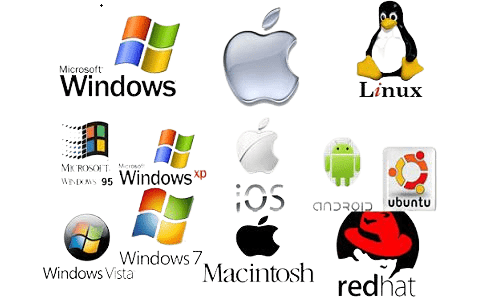
System software manages hardware and provides core functionality for all other applications.
| Software Name | Description | Platform |
|---|---|---|
| Microsoft Windows | The most widely used desktop OS | PC |
| macOS | Apple’s OS for laptops and desktops | Mac |
| Linux (Ubuntu, Fedora) | Open-source OS used by developers and servers | Cross-platform |
| BIOS / UEFI | Embedded firmware that boots the system | Hardware-integrated |
| Device Drivers | Software for enabling hardware components (e.g., printers, GPUs) | All hardware |
Application Software Examples
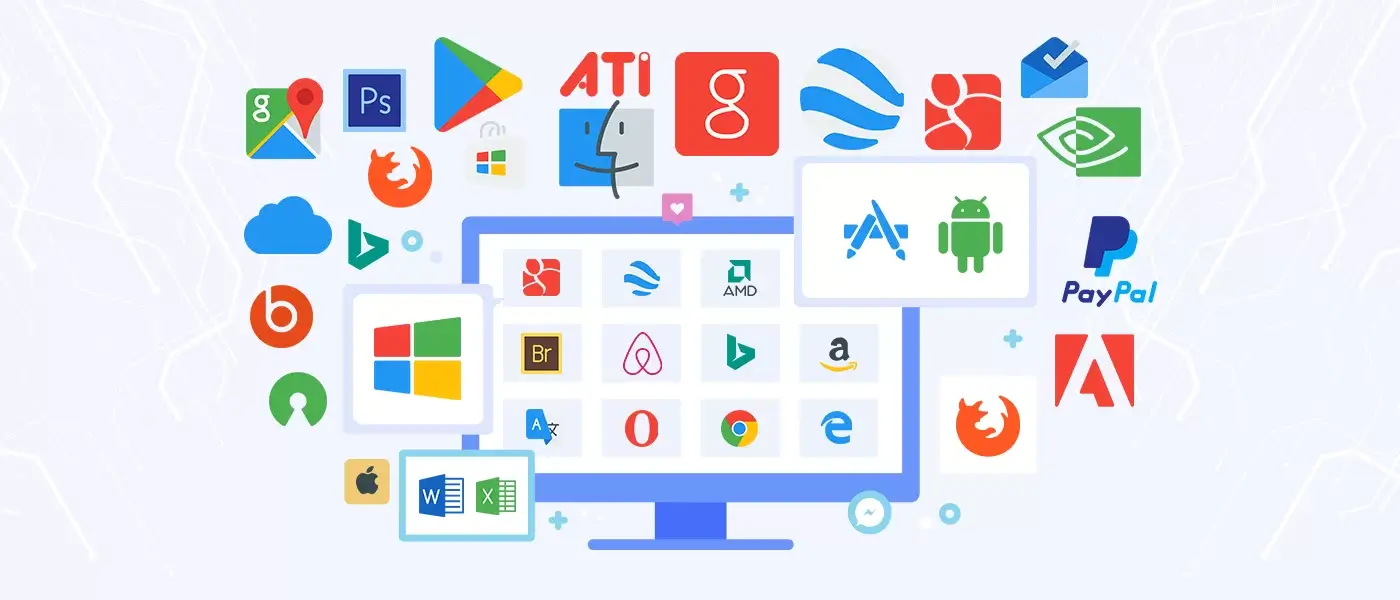
These programs are designed for end-users to perform specific tasks like writing, creating, communicating, or browsing.
| Software Name | Function | Category |
|---|---|---|
| Microsoft Word | Word processing | Office/Productivity |
| Adobe Photoshop | Image editing | Creative/Multimedia |
| Google Chrome | Web browsing | Internet/Browser |
| Slack | Team communication | Communication |
| Zoom | Video conferencing | Communication |
| Spotify | Streaming audio | Entertainment |
Programming Software Examples
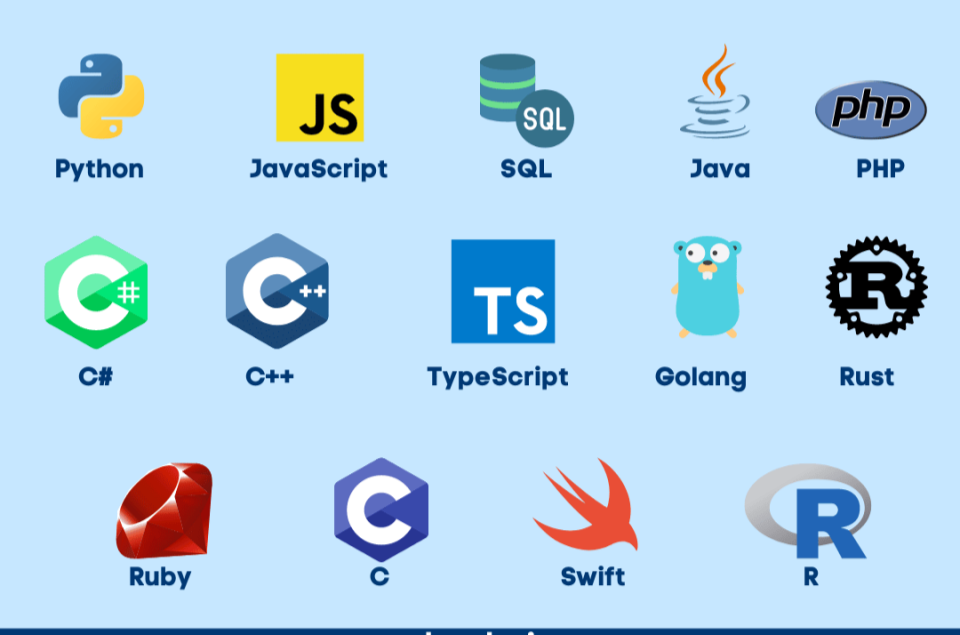
This category is used by computer software engineers and developers to create, debug, and compile code.
| Software Name | Purpose | Language Support |
|---|---|---|
| Visual Studio Code | Code editor with extensions | Python, JavaScript, more |
| Eclipse | IDE for enterprise applications | Java, C++, PHP |
| PyCharm | IDE tailored for Python | Python |
| GCC Compiler | Compiling source code | C, C++, Objective-C |
| NetBeans | Open-source IDE | Java, PHP, HTML5 |
Utility Software Examples
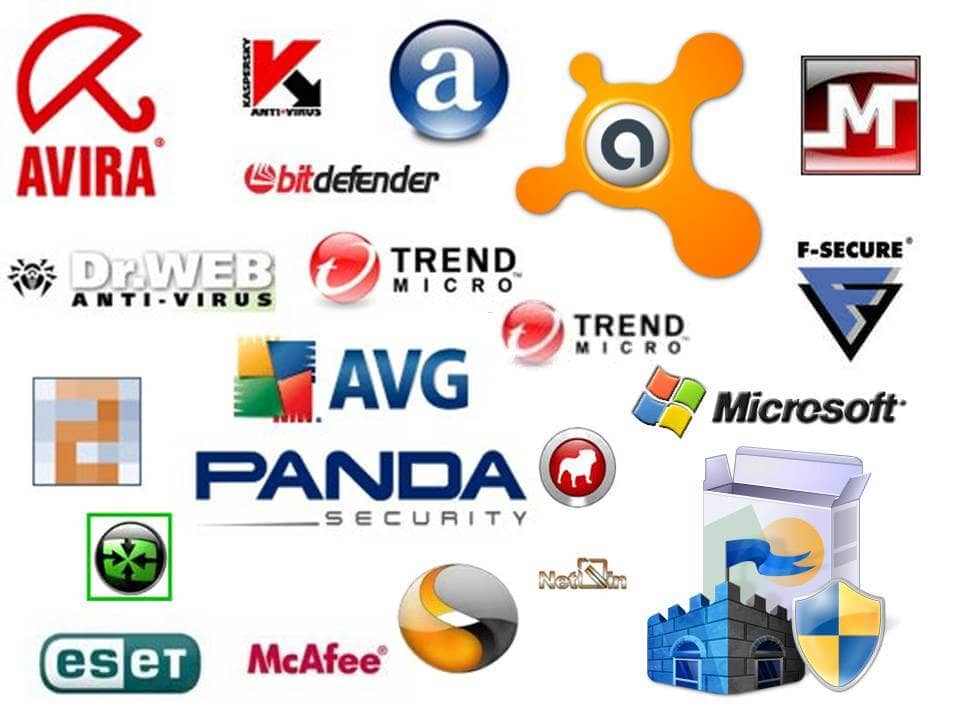
These tools maintain and optimize system performance, security, and functionality.
| Software Name | Function | Type |
|---|---|---|
| CCleaner | Clean temporary files, registry repair | Optimization |
| Malwarebytes | Detect and remove malware | Security |
| WinRAR / 7-Zip | File compression and extraction | Compression |
| Acronis True Image | System backup and restore | Backup & Recovery |
| Windows Defender | Real-time antivirus protection | Built-in Security (OS) |
Specialized Software for Business & Professionals

| Software Name | Purpose | Industry Use |
|---|---|---|
| AutoCAD | 2D/3D CAD design | Engineering/Architecture |
| SAP ERP | Enterprise resource planning | Finance/Operations |
| QuickBooks | Accounting and payroll management | Small Business |
| MATLAB | Mathematical modeling, simulations | Science/Academia |
| Tableau | Data visualization and analytics | Data Analysis/Business |
Cross-Platform & Cloud-Based Software
With the rise of cloud computing and SaaS (Software as a Service), many tools are now platform-agnostic:
- Google Workspace (Docs, Sheets, Drive) – accessible from any browser
- Microsoft 365 – available both as a desktop suite and online
- Canva – web-based design tool used by marketers and educators
- Dropbox – cloud storage and file syncing software
- Notion – collaborative workspace for notes, databases, and planning
These examples show the diversity and depth of computer software—from system-level tools that power machines to niche programs that support specific professional tasks.
Computer Software vs Hardware

To fully understand computer systems, it’s important to grasp the fundamental relationship and distinction between software and hardware. Although they function hand in hand, their nature, roles, and characteristics are entirely different.
Think of hardware as the body of the computer—physical, visible, and measurable—while computer software is the mind, instructing the body on what to do.
What Is Computer Hardware?
Hardware refers to all the physical components of a computer system. These include:
- Input devices (keyboard, mouse)
- Output devices (monitor, speakers)
- Processing devices (CPU, GPU)
- Storage devices (HDD, SSD)
- Peripheral devices (printers, scanners)
Hardware is tangible—you can touch it, replace it, or upgrade it.
What Is Computer Software?
Software, on the other hand, refers to the digital instructions and programs that tell the hardware how to function. As we explored earlier, this includes:
- Operating systems
- Applications
- Utilities
- Programming tools
computer software is intangible—it exists as code and data stored on hardware.
Interdependency Between Software and Hardware
While software and hardware are distinct, neither can function effectively without the other:
- Hardware without software is inert. A computer won’t boot, respond, or display anything.
- Software without hardware cannot run. It needs a physical platform to execute its instructions.
For example:
- A graphics card (hardware) can’t display 3D visuals unless it’s supported by a game engine or driver (software).
- A word processor (software) won’t be useful unless you have a keyboard and screen (hardware) to input and view content.
Analogy: Car vs Driver
A useful analogy:
- Hardware = The car (engine, tires, body)
- Software = The driver and driving instructions
You can have a car without a driver, but it won’t move. Similarly, computer software gives direction and meaning to what the hardware is capable of doing.
Table: Comparison of Hardware vs Software
| Feature | Hardware | Software |
|---|---|---|
| Definition | Physical components of a computer | Programs and instructions that run on hardware |
| Tangibility | Tangible (can be touched) | Intangible (exists as data/code) |
| Lifespan | Subject to wear and tear | Doesn’t degrade, but can become outdated |
| Upgradability | Involves replacing parts | Updated digitally (patches, new versions) |
| Function | Executes instructions | Provides instructions |
| Examples | CPU, RAM, keyboard, monitor | Windows OS, Photoshop, Chrome |
Understanding this relationship reinforces the concept that software gives life and functionality to hardware, while hardware gives software the means to operate in the real world.
How Software Is Developed and Updated
Behind every piece of software—whether it’s a full-fledged operating system or a simple calculator app—lies a meticulous process of planning, coding, testing, and refining. This process is known as the Software Development Life Cycle (SDLC), and it ensures that the software not only functions correctly but also meets user needs efficiently and securely.
Software Development Life Cycle (SDLC)
The SDLC is a structured process that guides developers from the conception of a software idea to its final deployment and maintenance. The key stages typically include:
- Requirement Analysis
- Understanding what the users need
- Setting clear objectives and functional requirements
- Design
- Creating system architecture, user interface designs, and data models
- Implementation (Coding)
- Writing the actual source code using programming languages such as Python, Java, C++, etc.
- Testing
- Ensuring the software is free of bugs and performs as expected
- Includes unit testing, integration testing, and user acceptance testing
- Deployment
- Releasing the software for public or internal use
- Maintenance & Updates
- Fixing issues, patching vulnerabilities, and adding features
This cycle is often repeated in an iterative model (like Agile or DevOps), allowing continuous updates and improvements based on real-time feedback.
Common Software Development Tools
Software engineers and developers use a wide array of tools during the creation process. Some essential categories include:
| Tool Type | Examples | Purpose |
|---|---|---|
| Code Editors / IDEs | Visual Studio Code, IntelliJ, Eclipse | Writing and managing code |
| Version Control | Git, GitHub, GitLab | Tracking changes and collaborating with teams |
| Testing Tools | Selenium, JUnit, Postman | Automated and manual testing |
| Build Tools | Maven, Gradle, Webpack | Compiling code, packaging for deployment |
| Project Management | Jira, Trello, Asana | Organizing tasks, timelines, and milestones |
These tools streamline the process and ensure that the final software product is robust, scalable, and maintainable.
How Software Is Updated
Software isn’t static. Even after it’s deployed, it undergoes updates to:
- Fix bugs
- Improve performance
- Add features
- Patch security vulnerabilities
- Stay compatible with evolving hardware and standards
Types of Updates:
- Patches: Small fixes addressing specific bugs or vulnerabilities
- Service Packs: Larger cumulative updates (often for OS or enterprise apps)
- Version Upgrades: Significant new features or architecture changes (e.g., from Windows 10 to Windows 11)
Automatic vs Manual Updates:
- Automatic Updates: Common in modern OS and apps (e.g., Google Chrome updates silently in the background)
- Manual Updates: Often seen in older systems or professional software where user control is important
The Role of Open Source and Proprietary Models
- Open-source software (like Linux, LibreOffice, GIMP) allows anyone to view and modify the code.
- Proprietary software (like Microsoft Office, Adobe Photoshop) is owned by companies and only distributed in compiled, non-editable form.
Each model has its pros and cons in terms of security, cost, and customizability.
In short, the development and evolution of software is an ongoing journey—one that blends creativity, logic, and problem-solving. Understanding this process helps users appreciate not just what software does, but the intensive work and engineering behind it.
The Role of Computer Software in Modern Technology
In today’s hyper-connected world, computer software is no longer just a support tool—it has become the driving force behind every innovation, service, and system that defines modern life. From enabling real-time communication to powering artificial intelligence, software is embedded in nearly every technological advancement across industries.
Let’s explore how software plays a crucial role in key areas of modern technology.
1. Business and Enterprise Solutions
Businesses of all sizes depend heavily on software to optimize operations, improve customer experiences, and drive revenue. Whether it’s small startups or multinational corporations, software streamlines workflows and enhances productivity.
Key Uses:
- Enterprise Resource Planning (ERP) software helps manage accounting, supply chains, HR, and customer relationships (e.g., SAP, Oracle).
- Customer Relationship Management (CRM) tools (e.g., Salesforce, HubSpot) allow businesses to track interactions and personalize marketing.
- Data analytics platforms enable predictive modeling and data-driven decisions.
Software empowers companies to scale, automate, and innovate faster than ever before.
2. Education and E-Learning
Educational software has revolutionized how we learn, teach, and access knowledge.
Examples:
- Learning Management Systems (LMS) like Moodle, Google Classroom, and Canvas allow remote learning, grading, and content delivery.
- Interactive software such as Duolingo, Coursera, and Khan Academy make self-paced learning widely accessible.
- Virtual labs and simulations help students experience practical applications of theoretical concepts—especially in STEM fields.
Especially during the COVID-19 pandemic, software became the backbone of global education continuity.
3. Healthcare and Medical Innovation
Software has drastically improved healthcare delivery, diagnostics, and patient outcomes.
Real-World Applications:
- Electronic Health Records (EHR) software stores and manages patient history securely (e.g., Epic, Cerner).
- Medical imaging software assists in analyzing MRI, CT scans, and X-rays.
- Telemedicine platforms facilitate remote consultations, reducing geographical and time barriers.
- AI-powered diagnostics can now detect early signs of diseases like cancer and diabetic retinopathy with greater accuracy.
Software is also at the core of robotic surgery systems, smart wearable devices, and health tracking apps.
4. Artificial Intelligence (AI) and Machine Learning (ML)
AI is software that mimics human intelligence, learning from data and making decisions. It’s driving breakthroughs in areas like:
- Natural language processing (e.g., chatbots, language translation)
- Computer vision (e.g., facial recognition, object detection)
- Predictive analytics (e.g., demand forecasting, financial modeling)
- Autonomous systems (e.g., self-driving cars)
These innovations depend entirely on advanced algorithms, huge datasets, and sophisticated software models.
5. Cybersecurity and Digital Safety
As digital threats evolve, cybersecurity software has become essential for protecting sensitive information and maintaining trust online.
Core Types of Security Software:
- Antivirus and anti-malware programs
- Firewall and computer network monitoring tools
- Encryption software
- Password managers and authentication systems
From individuals securing personal devices to governments defending infrastructure, cybersecurity relies on intelligent and adaptive software.
6. Creative Industries and Content Creation
Artists, designers, musicians, and filmmakers now rely almost entirely on software to create, edit, and distribute content.
Examples:
- Adobe Creative Cloud (Photoshop, Premiere Pro, Illustrator)
- Autodesk Maya for 3D modeling and animation
- Digital Audio Workstations (DAWs) like FL Studio, Ableton Live for music production
- Publishing platforms (e.g., Canva, Scribus) for visual communication and branding
Software has made professional-grade tools accessible to individuals, transforming creative fields.
7. Smart Homes, IoT, and Automation
Software powers smart devices that automate everyday tasks and connect seamlessly within homes and businesses.
- Smart assistants like Alexa, Siri, and Google Assistant interpret voice commands and control connected appliances.
- Home automation systems manage lighting, security, and climate control.
- Internet of Things (IoT) platforms allow factories to monitor machines in real time and predict failures.
Behind every smart thermostat or self-regulating refrigerator is embedded software orchestrating the interaction.
8. Cloud Computing and SaaS (Software as a Service)
The transition from local software to cloud-based services has redefined accessibility and scalability.
Benefits of Cloud Software:
- Access from anywhere via internet
- Subscription-based pricing reduces upfront costs
- Automatic updates and backups
- Scalability for both individual users and enterprises
Examples include Google Workspace, Dropbox, Salesforce, and Microsoft Azure.
As technology continues to evolve, the central role of software only grows stronger. From basic operating systems to cutting-edge machine learning models, software enables nearly every digital experience we have today—and those we’ll have tomorrow.
Common Misconceptions About Software
Despite software being a part of our everyday lives, many people still carry misunderstandings or outdated beliefs about what it is, how it works, or how it should be used. These misconceptions can lead to poor decisions, security risks, and inefficiency in both personal and professional contexts.
Let’s debunk some of the most common myths surrounding computer software.
1. “Software and Hardware Are the Same Thing”
This is perhaps the most basic misconception. While they work together closely, software is not hardware.
- Hardware is physical and tangible—like the monitor or keyboard.
- Software is intangible—it’s a program or instruction set.
They need each other, but they are entirely different components.
2. “Free Software Is Always Safe to Use”
There’s a common assumption that if software is free, it’s harmless. However, free does not always mean trustworthy.
- Some free software comes bundled with adware, spyware, or malware.
- Others may violate copyright laws or lack support and security updates.
Always verify the source, check user reviews, and scan downloads with security tools before installation.
3. “Once Installed, Software Doesn’t Need Updates”
Many users ignore software update notifications—often thinking they’re optional or annoying. In reality, updates often contain:
- Security patches that fix known vulnerabilities
- Performance improvements
- New features and enhancements
Failing to update software leaves your system vulnerable to exploitation, especially in the case of operating systems and antivirus tools.
4. “All Software Works on All Devices”
Not all software is cross-platform. Software is often designed for a specific operating system or hardware architecture.
Examples:
- A Windows program typically won’t run on macOS without emulation.
- Mobile apps (Android or iOS) can’t be installed on desktop systems.
Always check compatibility requirements before downloading or purchasing software.
5. “You Don’t Need Antivirus If You’re Careful Online”
Even cautious users can be targeted by zero-day exploits, phishing attacks, or drive-by downloads.
- Antivirus and firewall software provide a necessary layer of protection, especially for unknown threats.
- Being careful helps, but cyber threats evolve faster than human awareness.
A robust software security suite is still essential in 2025 and beyond.
6. “Software Piracy Is a Victimless Crime”
Using cracked or pirated software might seem harmless, but it has real consequences:
- Legal issues: It’s illegal in most countries
- Security risks: Cracks often contain malware or backdoors
- No updates/support: You’re cut off from bug fixes or new features
- Harm to developers: It undermines the people and businesses who create quality software
Supporting legitimate software fosters innovation and ensures safer, more reliable tools for everyone.
7. “Only Tech Experts Need to Understand Software”
In today’s digital landscape, basic software literacy is for everyone. Whether you’re a student, teacher, business owner, or retiree, you interact with software every day.
Understanding how software:
- Works
- Affects privacy
- Gets updated
- Can be secured
…can help you avoid scams, be more productive, and navigate the digital world with confidence.
By dispelling these myths, users can make smarter choices—selecting, using, and maintaining software in a way that’s secure, efficient, and aligned with best practices.
Conclusion
Computer software is the invisible engine that powers everything from personal computers and smartphones to hospital systems, space exploration, and global finance. Without software, even the most advanced hardware would be nothing more than idle circuitry.
Through this article, we’ve explored how software:
- Is classified into system, application, programming, and utility software
- Plays critical roles in resource management, productivity, security, and automation
- Impacts nearly every modern industry, from education and healthcare to business and AI
- Evolves through a rigorous development and update cycle
- Is often misunderstood, with common myths leading to poor decisions or vulnerabilities
By understanding the different types, functions, and real-world importance of software, users can better appreciate its value, make informed choices, and adapt confidently to the ever-changing landscape of digital technology.
In a world that increasingly relies on software to solve problems, make connections, and create the future, digital literacy isn’t optional—it’s essential.
FAQ About Computer Software
What is computer software in simple terms?
Computer software refers to the set of instructions or programs that tell a computer what to do. Unlike hardware, which you can physically touch, software is intangible—it exists as code and data that run on a device. Everything from your operating system to the apps you use daily (like web browsers or games) is considered software.
What are the 4 types of computer software?
The four primary types of computer software are:
System Software – Runs and manages hardware (e.g., Windows, Linux)
Application Software – Helps users perform specific tasks (e.g., MS Word, Photoshop)
Programming Software – Tools used by developers to build other software (e.g., Python, compilers)
Utility Software – Enhances system performance and security (e.g., antivirus, backup tools)
What is the most important function of software?
The most essential function of software is to enable communication between users and hardware. Software translates human instructions into machine language, allowing devices to perform tasks—from launching a website to processing financial data—accurately and efficiently.
What are examples of system and application software?
System Software: Windows 11, macOS, Linux, BIOS, device drivers
Application Software: Microsoft Excel, Adobe Illustrator, Google Chrome, VLC Media Player
System software runs in the background and manages your device, while application software is designed for user-driven tasks like writing, designing, or browsing the web.
How is software different from hardware?
Software is a set of digital instructions that tells hardware what to do. It’s intangible and can be installed, modified, or deleted. Hardware, on the other hand, is physical equipment—like your monitor, keyboard, or hard drive—that you can touch. Both are essential, but they perform different roles and must work together for a computer to function.

